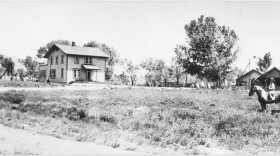-
A historic Chino Valley farm that supported Fred Harvey’s railroad dining empire over a century ago is on track to become part of a new state park.
-
Mammoth bones found on the Colorado Plateau may shift the timeline of when humans first reached the Americas. Archaeologists are debating what the discovery means.
-
The Clovis people hunted mammoths and other Ice Age giants more than 13,000 years ago. Archaeologists are uncovering what happened when those animals disappeared.
-
The Clovis people hunted mammoths across the Southwest more than 13,000 years ago. Archaeologists are still uncovering what their tools and camps reveal.
-
Some spiders don’t just spin webs — they listen through them. Researchers found that orb-weavers can sense vibrations on their silk to detect prey and danger.
-
On a walk through the woods, you might see a strange-looking growth up in the branches of a tree. It’s called a witches’ broom.
-
Fire and drought are transforming western forests — and the Mexican Spotted Owl is adapting to survive.
-
Biochar, made from burned plant material, is giving new life to waste — and helping fight climate change in the process.
-
The 64-mile steam train service from Williams to the South Rim of the Grand Canyon began in 1901, when a ticket cost $3.95. An updated, eco-friendly version is still in use today.
-
New research in New Mexico shows that black bears thrive in forests renewed by fire — especially when it means more berries, acorns and cover.

Play Live Radio
Next Up:
0:00
0:00
Available On Air Stations










